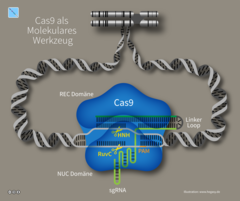A new screening tool for Parkinson’s Disease was just discovered by a team of researchers at the University of Central Florida. They did this by using cutting edge gene-editing technology, CRISPR Cas-9, which allows scientists to detect levels of alpha-synuclein, a brain protein associated with Parkinson’s.
What is alpha-synuclein?
This protein can be found in our brain, it is something all humans have. When someone develops Parkinson’s, the levels of this protein become abnormal. This protein can become dangerous to neurons and kill them. This person would gradually loose brain cells, affecting their motor functions.
What is CRISPR Cas-9?
CRISPR Cas-9, Clustered Regularly Interspaced Short Palindromic Repeats, is a gene-editing system that enables scientists to edit DNA while preserving the cell. Instead of extracting all of the proteins from a cell and measuring them, CRISPR Cas-9 allows us to edit one gene.
How is used?
The specific gene the team wanted to edit was the alpha-synuclein. The CRISPR Cas-9 helped them edit the gene and add a luminescent tag, made up of similar proteins that make fireflies glow, in order to track how much of this protein is produced in a brain cell. When the brain cell produces alpha-synuclein, it glows, making it easier to visualize once the cell is in a diseased state. Furthermore, scientists can treat these cells with different medications, whether or not they glow will tell if the medications tested are successful.
The Future:
Engineered cells and light detection are a great duo for the future of researchers. Light detection on these engineered cells is helpful for high throughput screening where multiple drugs can be tested at the same time. This research can potentially lower the number of Parkinson’s cases per year. Currently, 60,000 new cases are reported per year in just the United States! Could these numbers drop in the future? Can CRISPR help find a cure to other diseases as well? Reading this article opened my mind to the endless possibilities CRISPR unlocked, I am excited to see where else it could take science.



Leave a Reply